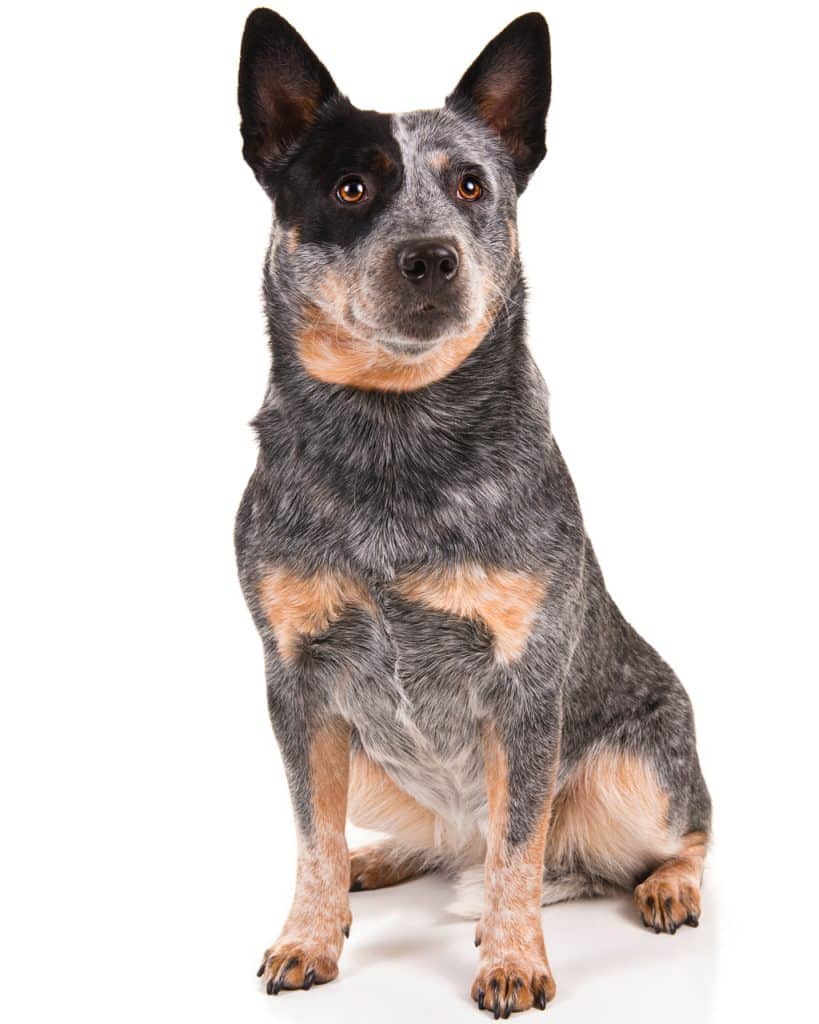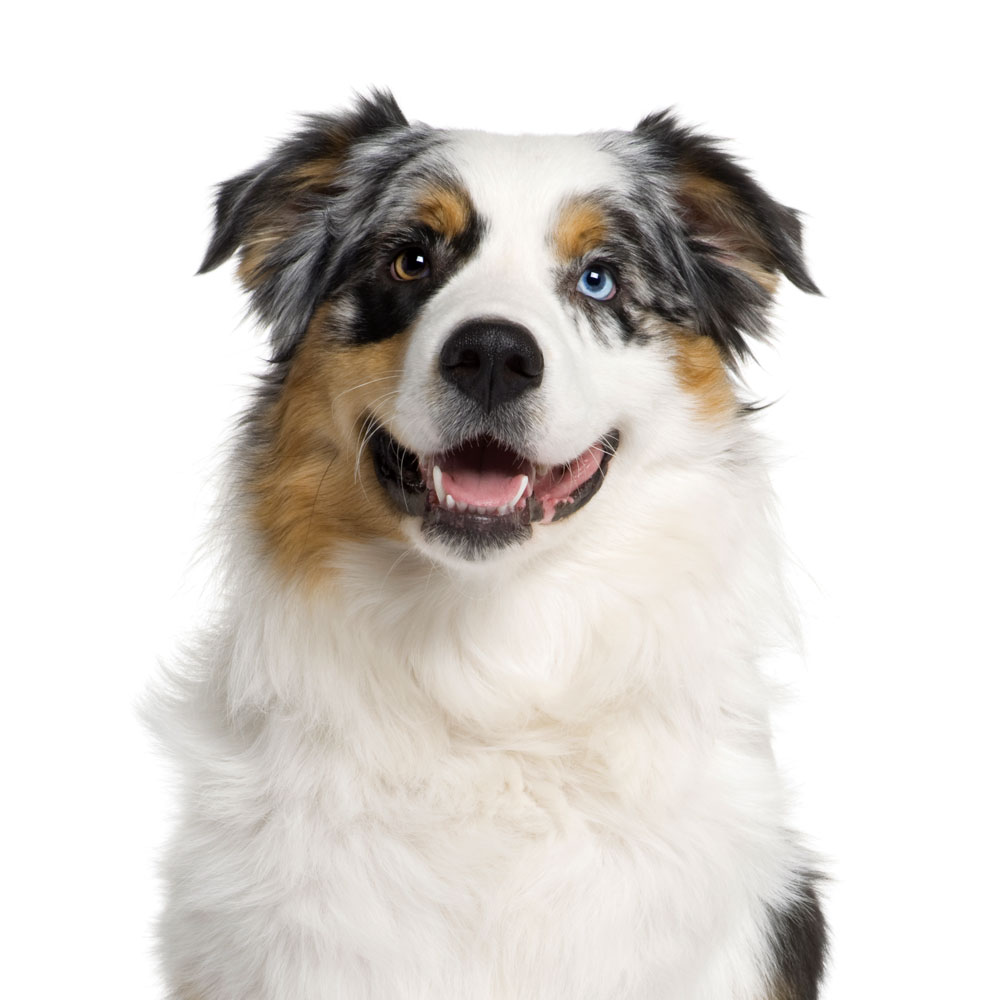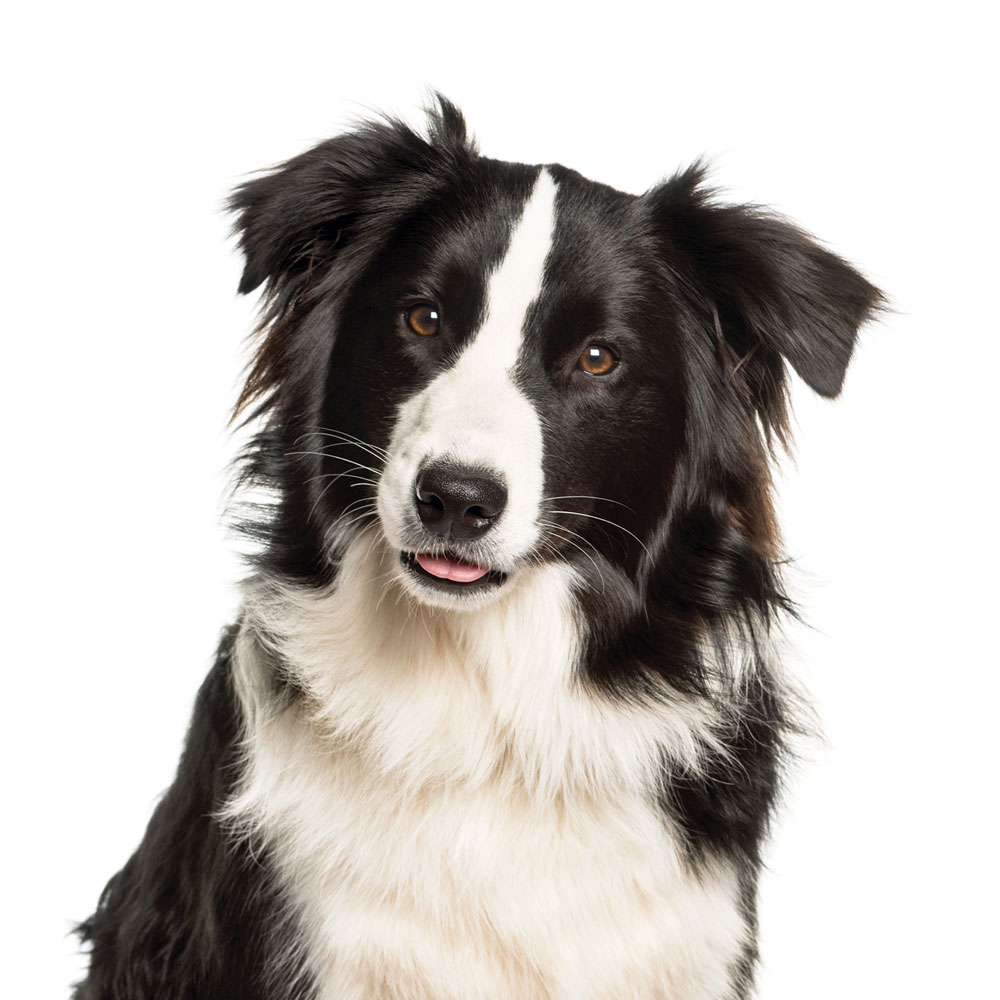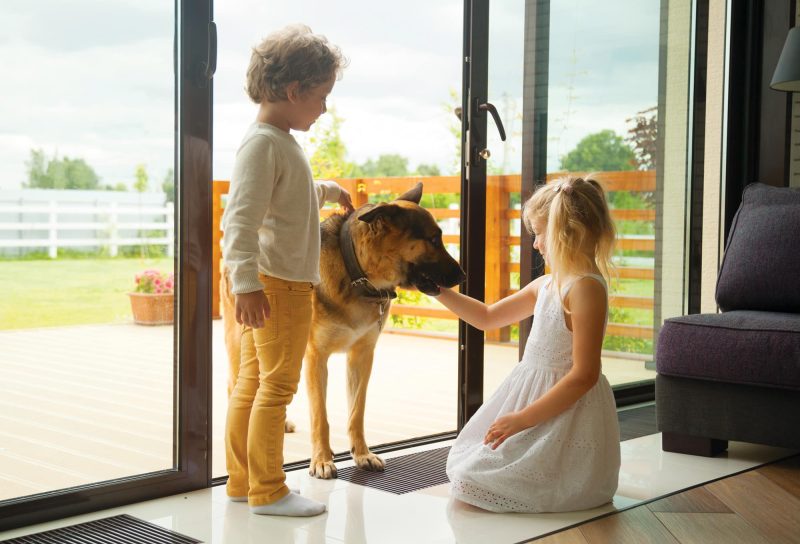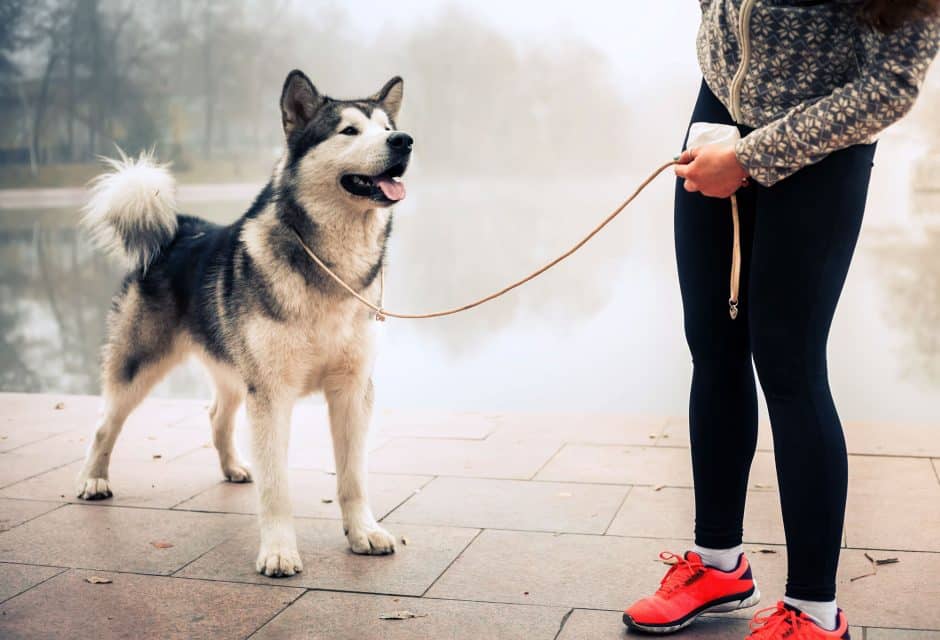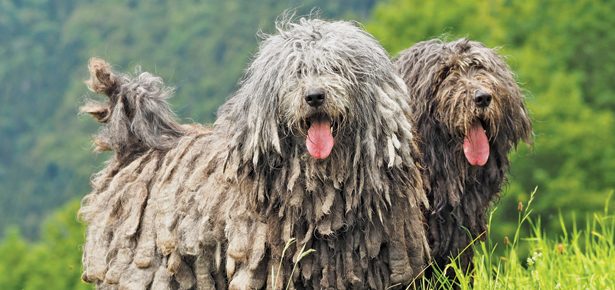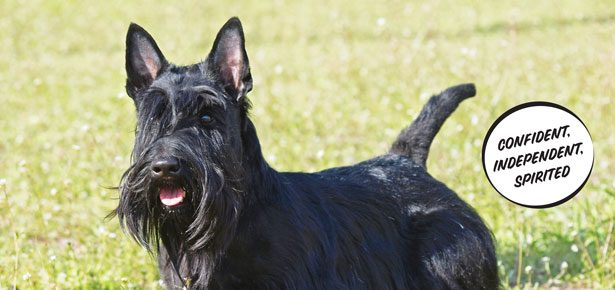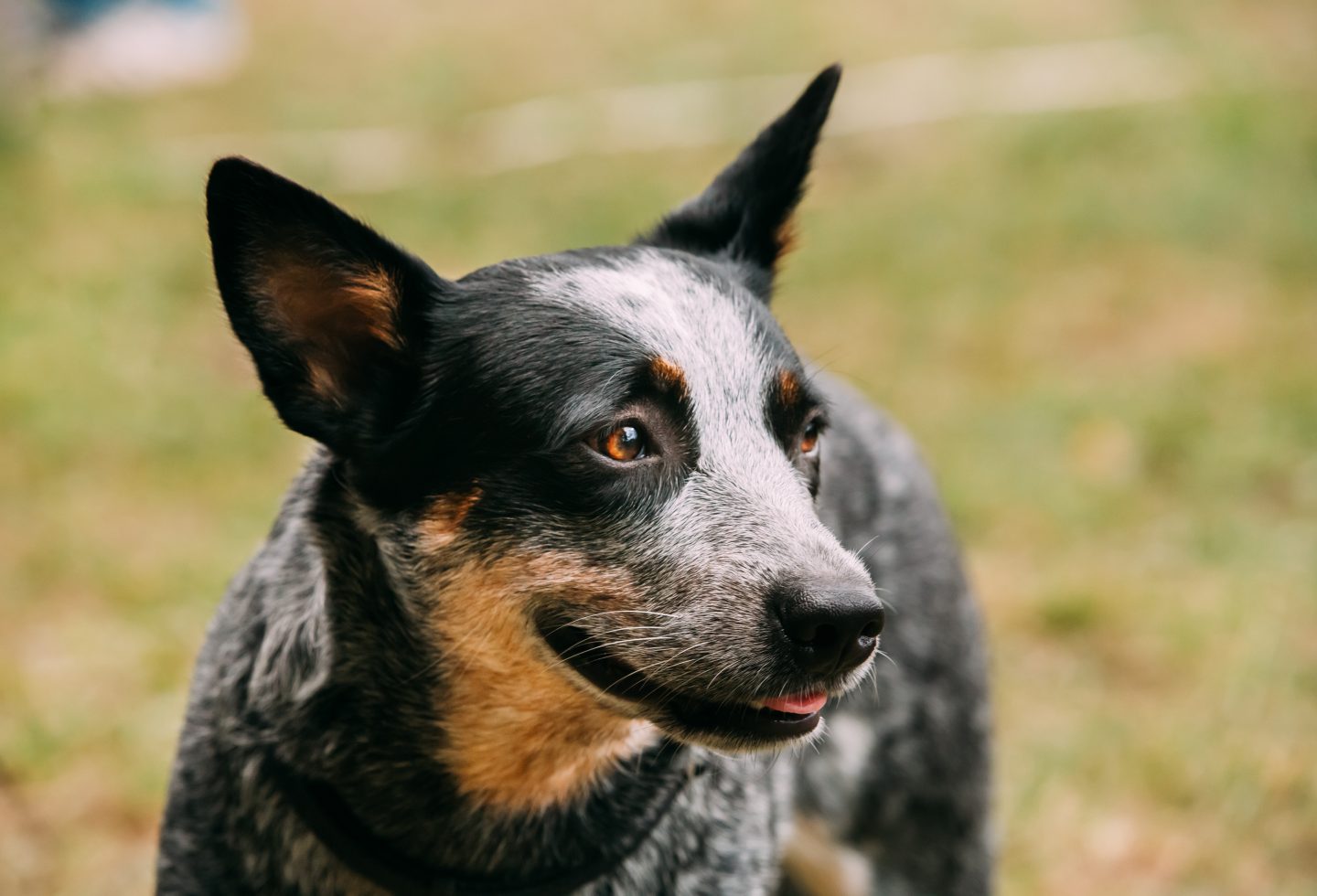
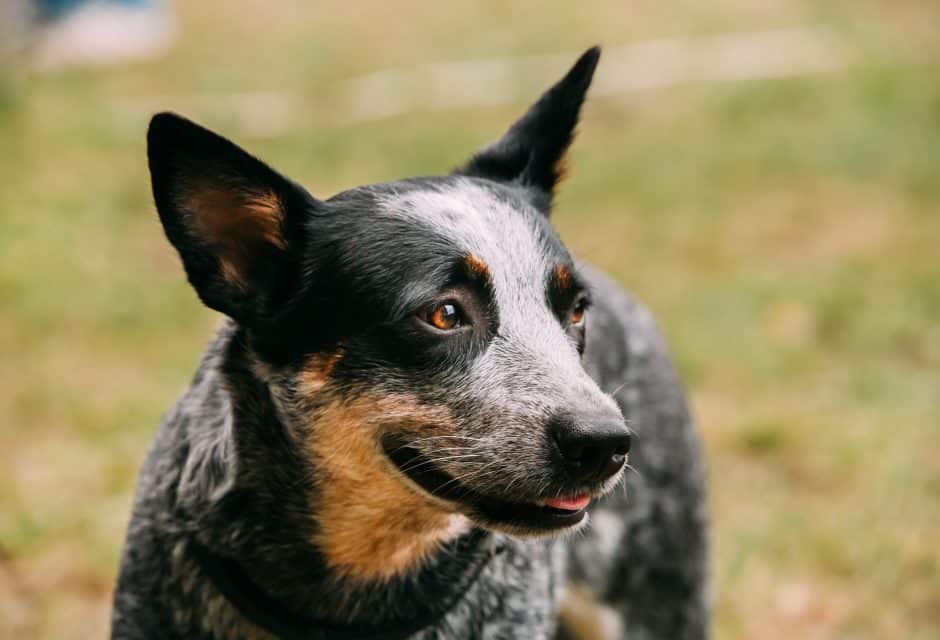
The Australian Cattle Dog
World-Class Herder from the Land Down Under

Wild, rugged, and stunningly beautiful, Australia is a special place with a fascinating history. Part of that history is the development of its beef industry, dating back to the late 1700s, when a small herd of cattle arrived with European settlers.
It may have seemed an impossible task, given the land’s tough terrain and harsh climate, but over the centuries, beef has become an important part of the nation’s economy. And none of it would have happened without the help of dogs, most notably the Australian Cattle Dog.
Long before there were cattle in Australia, there were dogs—and, before that, Dingoes. Speculation is that Dingoes were first brought to Australia by way of Asia, roughly 4000 years ago. Dingoes became an iconic Australian wild dog, noted for their toughness and ability to survive in harsh climates and terrain. They were also relatively at ease with humans and not overly interested in conflicts.
Over the centuries, a number of dog breeds arrived by way of travellers from Europe and beyond. Inter-breeding between Dingoes and dogs happened naturally, and some of those mixes proved helpful on farms. Ranchers needed dogs that could skillfully drive cattle over long distances with rough terrain in extreme heat. The imported dogs did their best, but the climate often proved too much.
The already-adapted Dingo provided an answer. Fancier George Elliott is widely credited as the founder of the breed. He crossed Dingoes with carefully-selected Blue-Merle Collies and Collie mixes. He wanted a compact, sturdy dog with excellent herding skills and the ability to contend with the Australian terrain and heat. His dogs gained a lot of attention among ranchers. His Dingo mixes served as the beginnings of what would become the Australian Cattle Dog.
In subsequent years, other fanciers introduced Dalmatian stock, a decision made because that breed was notoriously calm around horses. As a result, the merle markings changed to more of a speckle—either red or blue in tone. Other breeds were brought in to enhance various aspects of temperament, including the Australian Kelpie. Ultimately, the end result was a compact, athletic dog very comparable to the Dingo in appearance and type but with great calm around horses, and a desire to spend time with people.
Tough, intelligent, and versatile, the Australian Cattle Dog quickly gained favour with Australian ranchers. The breed’s endurance and ability to work cattle on long, tough cattle runs was virtually unparalleled.
The type was firmly established by the 1890s. The breed was initially known as the Australian Heeler and a standard was recognized in 1903 by the Cattle and Sheep Dog Club of Australia. Today, he is known as the Australian Cattle Dog, but over the years he’s also gone by the Blue Heeler and Queensland Heeler. Whatever you choose to call him, he’ll pay attention. This dog is always paying attention!
Most Popular Dogs in the US
According to the most recent AKC registration statistics
[1] Labrador Retriever
[2] German Shepherd
[3] Golden Retriever
[4] French Bulldog
[5] Bulldog
[6] Beagle
[7] Poodle
[8] Rottweiler
[9] Yorkshire Terrier
[10] Pointers
[55] Australian Cattle Dog
The Australian Cattle Dog was accepted by the American Kennel Club (AKC) in 1980. The AKC accepts blue and red speckle colour variations. This breed is slightly longer than tall and has a distinctive head with pointy ears that speak to his Dingo heritage. Males should be 18 to 20 inches at the withers and females 17 to 19 inches.
While he’s still considered a great choice as a working breed, today’s Australian Cattle Dogs (ACD) are more commonly found on the homestead simply “being” with their families. So, what’s this hard-working herder like to live with?
For starters, he’s smart, loyal, and protective… all traits that served him well in his original purpose. This is a busy breed that makes an ideal companion for someone with an active lifestyle. The ACD needs both mental and physical stimulation, and lots of it.
Early training for good manners and socialization is important. Like many herding breeds, the ACD can be protective of his people, toys, food, etc. His innate instinct to herd isn’t something that just goes away once he’s off the farm. Positive reinforcement training and plenty of socialization from an early age will help ensure he becomes well-adjusted and easy to live with.
As far as training goes, the ACD is smart and loves to learn. You can throw just about any activity his way and he’ll delve into it. In fact, he’ll probably excel at it—we are talking about one of the greatest over-achievers in the dog-world!
Give this dog a job, if you want him to thrive. What job? Herding trials are an obvious option, but beyond that just about any activity that requires focus and effort. This breed is a natural when it comes to obedience, but he’ll embrace any sport. Agility, Flyball, Carting—the more the merrier. Oh, and don’t forget play time. Because in addition to his walks and activities, he’ll also just want to play with you and let loose.
Like many herding breeds, the ACD can be a bit of a velcro dog. He tends to choose his main person and wants to stay as close to them as possible. That loyalty makes him a nice ‘up for anything’ breed. Want to hop in the car and go do something? Sure! No fear, no worries, the easygoing ACD just goes along and hopes there will be some fun in it for him.
Around the home, the Australian Cattle Dog is relatively quiet to live with, though he will let you know when someone arrives. He’s naturally suspicious of strangers and has a strong protective instinct.
Profile: The Australian Cattle Dog
Size: Medium
Males range from 18-20 inches at the shoulder: with females from 17-19 inches. Weight range is from 35-50 pounds.
Activity Level: 5/5
This is a highly energetic breeds that cannot thrive without proper physical and mental stimulations. Daily, vigorous walks are a minimum; think sport, trail running, and herding activities, to really see the ACD at his best and happiest.
Grooming: 2/5
Built tough, the smooth, double-layered coat is no exception. Weekly brushing and occasional baths will do. Like many dogs, the ACD will shed his undercoat a couple of time each year.
Heritage:
Herding dog able to handle large runs of cattle. Compact, sturdy, intelligent, and very athletic, he’s one of the best herders in the business.
For more information on Australian Cattle Dog rescue in the U.S. and Canda, visit acdrescueinc.org
A fenced-in backyard is advised for this breed. Curiousity, athleticism, and a healthy dose of independence mean the ACD may just feel he “has” go walk-about if he sees something worth a chase.
Grooming is low-maintenance with the ACD—regular nail trims, ear checks, and weekly brushing will keep him looking dapper. In terms of health, he’s a hearty breed but as with all purebreds it’s important work with a responsible breeder who screens their dogs for health conditions known to affect the breed.
Big things come in small packages and this world-class herder proves it. There’s a lot of “dog” in this dog. Is he a no-brainer breed as a pet? No. But when he’s the right dog for you, and you’re the right guardian for him, it has the potential to be one of the greatest partnerships of your life, because the love and loyalty of an Australian Cattle Dog is as large and wondrous as his native home.
If you like the Australian Cattle Dog, you might also consider the:
Australian Kelpie Australian Shepherd Border Collie
» Read Your Breed For more breed profiles, go to moderndogmagazine.com/breeds
Join the newsletter and never miss out on dog content again!
"*" indicates required fields
By clicking the arrow, you agree to our web Terms of Use and Privacy & Cookie Policy. Easy unsubscribe links are provided in every email.
